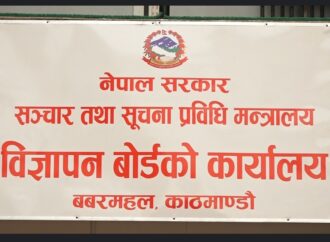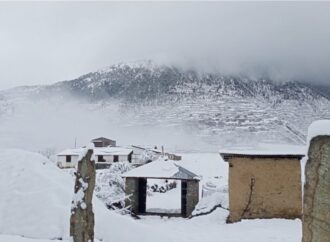The Department of Archaeology of Nepal, and UNESCO will sign an agreement, in the presence of Japanese Embassy, tomorrow, 23 March 2018 to implement the third phase of the three-year project, titled “Strengthening conservation and management of Lumbini, the birthplace of Lord Buddha, World Heritage property” funded by the Government of Japan.
This phase will focus on archaeological research and conservation of Tilaurakot, the archaeological remains of the capital of the ancient Shakya Kingdom, and on preparing for the World Heritage nomination process of the site. The project will be implemented by UNESCO in close cooperation with the Department of Archaeology and the Lumbini Development Trust.
Bhesh Narayan Dahal, Director-General of the Department of Archaeology noted, “I am confident that the project will contribute to preserve the important archaeological remains of Tilaurakot and to strengthen the capacity of archaeological staff at the Department of Archaeology”.
The project that was initiated in 2010 has achieved many significant results, including: excavations within the Mayadevi Temple, which for the first time revealed evidence of structures dating back to Lord Buddha’s lifetime in 6th century BCE, and the conservation of emblematic monuments at Lumbini. Archaeological Risk Maps of Lumbini and Tilaurakot have also been prepared and these will assist in planning for physical infrastructure, and the establishment of an Integrated Management Plan for Lumbini. Furthermore, the project discovered significant archaeological findings in Tilaurakot, including a hoard of 500 3rd century BCE silver punch-marked coins from the monastery area, the revelation of the most comprehensive plan of an early historic city to date in South Asia, and a monumental central walled palace complex at the centre of the site.
UNESCO also contributes to coordination, through the organisation of annual meetings of the International Scientific Committee for conservation and management of Lumbini. This meeting brings national and international stakeholders together, to ensure that the major interests of the site, including the conservation of historical remains, the development of the Lumbini region and the needs of the Buddhist pilgrims, are not in conflict, but develop in harmony.
Christian Manhart, UNESCO Representative to Nepal, stated, “We are pleased to contribute to the coordination and protection of the Greater Lumbini Area for future generations. Lumbini is one of the holiest Buddhist sites in the world and the next phase of the project marks an important chapter in its safeguarding”.
Press release UNESCO/KAT 02 2018














